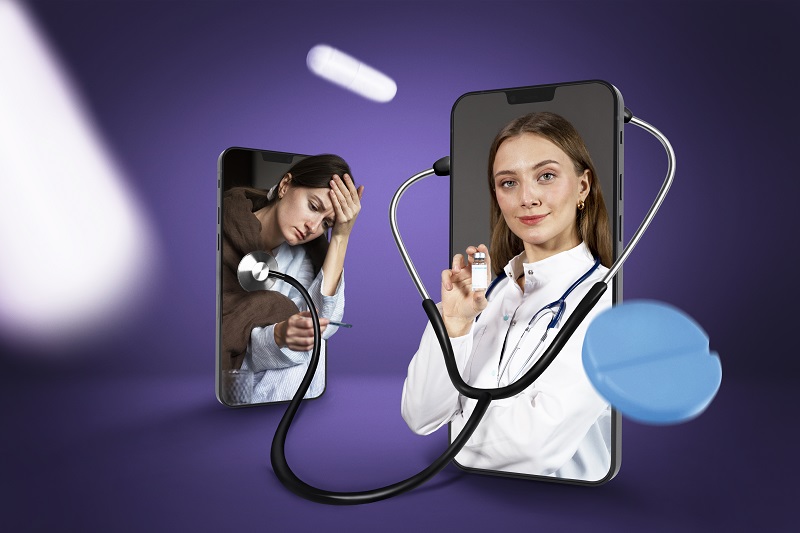How Telehealth and Physiotherapy Software are Revolutionizing Patient Rehabilitation

Move to Complete Physical Therapy Software
What can be more interesting than moving to affordable practice management software and determining how to use it for your physical therapy practice? After all, at the end of the day, every therapist wishes to show up to work every day and do everything he can for patient care without the hassle of irksome and ineffective administrative processes.
Does it really make sense to use physiotherapy clinic software for your practice? Gain insights into its benefits –
Automatic Check-Ins
The time that a physical therapist needs to spend with his patient is between 17 to 24 minutes, with an average wait time of 18 minutes. The automatic check-in option is a win-win situation for both the existing as well as new patients as the existing ones can update their personal information prior to their visit and the new patients can register at the clinic. Additionally, it will be convenient for the practice to check the patients effectively if the data is integrated with electronic health records.
Accurate Patient Records
Physiotherapy clinic software provides updated patient information that can be seen by rehabilitation therapists. They can easily access patients’ medical history, which further ensures efficient and appropriate healthcare services for them.
Optimized Rehabilitation Outcomes
The physiotherapy software solutions also enable the integration of various wearable technology that allow therapists to monitor and track every movement of the patient remotely, adherence to exercises, and progress. The use of real-time data from these devices gives therapists objective insights into patient performance, allowing them to monitor compliance, alter treatment regimens, and make data-driven decisions.
Overall, the transforming impact of physiotherapy clinic software has replaced the period of only depending on paper-based documentation and basic treatment regimens. With the help of this cutting-edge technology, patients may benefit fully from treatment plans that are precisely designed to meet their unique requirements and objectives.
Telehealth – Access to Care Beyond Traditional Clinic Settings
The uncertainty of the year 2020 inspired the rehabilitation treatment community to look for creative and adaptive ways to keep providing the best care possible. A majority of them look up to telehealth to figure out how it has a positive impact on physical therapy practice as well as patients, taking into account the requirement of the pandemic for social isolation.
Therapists can now make better-informed decisions supported by facts rather than speculating about how telehealth may affect patients and practices.
Let’s explore the growing use of telehealth in the field of physical therapy, outlining its advantages, difficulties, and prospective effects on patient treatment in the future –
A Boon for Hard-to-Reach Populations
Telehealth has made it possible to reach and provide healthcare services to communities that are hard to reach. It is a blessing for those who reside in inaccessible locations or have limited mobility. It is also a great benefit for those facing economic challenges to avail of healthcare facilities. Telehealth allows physical therapists to bridge the gap by providing virtual consultations, remote monitoring, and individualized treatment regimens.
Patient Satisfaction
Patient satisfaction is essential for marketing, referrals, reviews, and maintaining current clients in a cutthroat industry. With telehealth, patients like the accessibility and convenience of receiving care in the comfort of their homes, which reduces the need for travel and waiting areas. Patients also like the individualized treatment and enhanced involvement in their own care that telehealth platforms enable. Overall, telehealth has shown to be a beneficial and well-liked healthcare alternative, increasing patient satisfaction and strengthening the patient-provider connection.
Improved Patient Engagement
Telehealth has allowed patients to have access to the latest tools and platforms that enhance patient engagement and their commitment to their exercise regimens.
Real-time communication and remote monitoring are made possible by mobile applications, wearable technology, and teleconferencing platforms, enabling patients to actively engage in therapy and maintain motivation.
Customized Treatment Plans
Physical therapists can create customized treatment plans and home exercise programs that perfectly match the patient’s requirements. With interactive interfaces, therapists can design customized rehabilitation protocols that include specific exercises, intensity levels, and progressions.
Seamless Communication
Telehealth supports continuity of care by facilitating seamless communication between physical therapists and patients. Remote follow-up consultations, evaluations of patient progress, and adjustments to exercise routines are simple to arrange, ensuring that patients have continued assistance and direction throughout their rehabilitation process. This enables physical therapy to deliver consistent patient care without the possibility of delaying the treatment.
Physical therapy is expected to continue expanding its use of telehealth. Artificial intelligence, augmented reality, and virtual reality are all emerging technologies that have the potential to improve the remote therapy experience.
Telehealth in Physical Therapy Offers a Versatile Platform for:
- Remote Communication
- Home Exercise Prescription and Monitoring
- Exercise Result Tracking and Data Storage
Telehealth has transformed the way patients receive care and communicate with their therapists. It has the potential to enhance accessibility, deliver the best patient outcomes, and transform the way physical therapy services are provided. In other words, it works towards reshaping the future of physical therapy. As technology develops, physiotherapy software further revolutionizes patient rehabilitation by increasing effectiveness, and quality of care.
To Wrap Up
Thanks to the use of physiotherapy clinic software, physical therapists can now come up with high-quality patient care that supports effective rehabilitation and patient experience. Clear instructions, visual demonstrations, and progress monitoring tools are made available to patients through interactive interfaces, empowering them to take an active role in their own treatment.